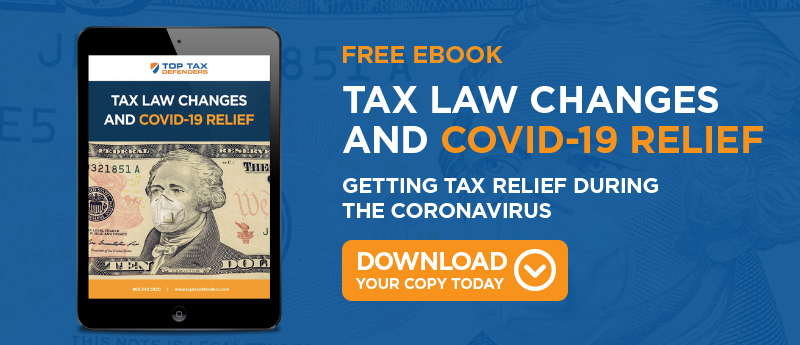
The Employee Retention Tax Credit program has ended, but you can still claim retroactive credits if you qualify. It's not too late! You have until 2024, or in some cases, 2025, to do a look-back on your payroll and retroactively claim the credit by filing an amended tax return.
The only catch is that you must meet the eligibility qualifications set by the American Rescue Plan and CARES acts — and that can get a little tricky.
What Is the Employee Retention Tax Credit?
The credit was available to all eligible employers of any size that paid qualified wages, including health insurance costs, to employees during the pandemic.
The CARES (Coronavirus Aid, Relief, and Economic Security) Act encouraged employers to keep their employees on the payroll during the months of 2020 affected by the pandemic.
That year, the credit was only worth 50% of qualified employee wages and was limited to $10,000 per employee annually. The maximum credit was $5,000 for wages paid from March 12, 2020, to December 31, 2021.
In 2021, Congress updated the credit to include 70% of wages and raised the per-employee wage limit to $10,000 per employee per quarter. The act also requires employers to show a significant decline in gross receipts compared to the same period in 2019.
The feds defined a significant decline as 020 gross receipts that were less than 50% of the 2019 gross receipts for the same calendar quarter. The allowed period ends on January 1, 2021, or the first calendar quarter after the quarter for which gross receipts are greater than 80% of gross receipts for the same 2019 quarter.
(We said it was confusing.)
How the Employee Retention Tax Credit Worked
In June 2021, The American Rescue Plan laid the rules for businesses to claim nonrefundable portions of employee retention tax credits against Medicare taxes instead of Social Security taxes, as had been allowed previously.
Changes only apply to wages paid after June 30, 2021, and don’t change with the credit amount. If a credit exceeds the employer’s total liability for a portion of Social Security or Medicare, the government refunds the excess to the employer.
To qualify, business operations must comprise a more than nominal portion. Gross receipts for the suspended period cannot be less than 10% of the gross receipts from the same quarter in 2019. Also, the hours of service performed by employees cannot be less than 10% of the total number of hours worked by all employees in the business.
The government provided partial suspensions where business operations were limited by federal, state, or local orders, proclamations, or decrees. A partial suspension was possible if an order limited the number of hours a business could remain open or if some business operations were shuttered and could not be performed remotely.
Qualifying Wages
Qualifying wages are the wages or compensation subject to FICA taxes and qualified health expenses.
Each employer determines the number of full-time employees, those who worked at least 30 hours a week or 130 hours in a given month anytime in 2019. Congress based this definition on the employer-shared responsibility in the Affordable Care Act (ACA or Obamacare).
If your employees earn tips, they are included in the qualifying wage definition if they were subject to FICA. However, owner wages do not qualify if the individual is the majority owner. Also, you may not include wages paid to individuals related to the majority owner, including:
- A child or descendant of a child
- Brothers, sisters, and step-siblings
- Stepmothers and stepfathers
- Nieces and nephews
- Aunts and uncles
- In-laws - brother, sister, father, mother, son, or daughter
You must have paid the wages after March 12, 2020, through September 30, 2021, for them to qualify. If you were a Recovery Startup Business, wages paid through December 31, 2021, also qualify.
The IRS has multiple methods of calculating qualified health expenses based on the circumstances, but it typically includes the employer and employee pre-tax portion. It does not include the after-tax portion of payments for health insurance.
No Double-Dipping
If you claim the employee retention credit:
- You cannot take a credit against the same qualified wages for paid family medical leave
- You cannot include the wages of an employee included in the Work Opportunity Tax Credit
- You cannot take the credit for wages not forgiven or expected to be forgiven under a Payroll Protection Plan (PPP) loan
If you accepted a Shuttered Venue Operator’s Grant (SVOG) or the Restaurant Revitalization Fund (RRF), you cannot treat any payroll costs used in connection with either program to justify using the grant as qualified wages in the employee retention credit program during Q3 of 2021.
RRF funds must be used for eligible uses no later than March 11, 2023. SVOG dates vary, but the latest the funds must be used is June 30, 2022.
Claiming the Employee Retention Credit Retroactively
To claim credits for past quarters, file Form 941-X Adjusted Employer’s Quarterly Federal Tax Return or Claim for Refund for each quarter in which you paid qualified wages. Essentially, you are filing an amended tax return.
Most employers are eligible for a retroactive credit, including colleges and universities, hospitals, and 501(c) organizations. You may be eligible if:
- A government entity suspended operations during any calendar quarter limiting commerce, travel, or group meetings due to COVID-19 OR
- Your business experienced a significant decline in gross receipts during the calendar quarter (see above)
One caveat: you can only claim the credit for the portion of the quarter business was suspended, not the entire quarter.
The 2021 COVID-19 employee retention credit equals 70% of qualified wages. The maximum amount of qualified wages for any individual employee per quarter is limited to $10,000, including any qualifying health plan expenses.
Bottom Line
What with the pandemic spanning two Presidential administrations and all the gyrations of Congress to keep up with changing conditions, it’s no wonder the employee retention tax credit seems too difficult to deal with, if you've even heard of it.
There are certainly plenty of hoops to jump through and details to understand, but you can benefit from the credit if you are eligible.
But hurry! This offer expires on April 15, 2024, to file amended returns for Q2 through Q4 of 2020 and on April 15, 2025, to file amended returns for Q1 through Q4 of 2021.




